G type Chain Thin. What are the 3 major line types that are used for technical drawings.
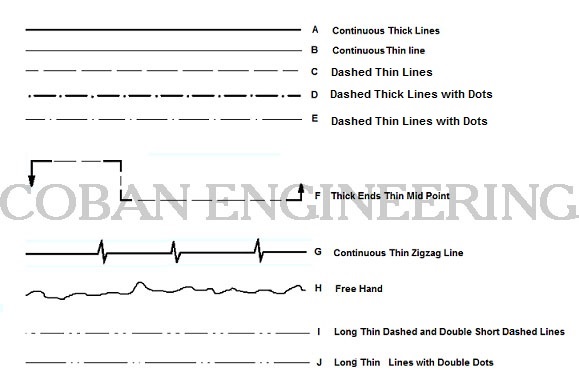
Technical Drawings Lines Geometric Dimensioning And Tolerancing Definition Of The Drawings Lines Iso Ansi Projected Two View Drawing
Medium lines fall between these two extremes.
. Drawings for interior designprojects generally use three line widths. Usually terminates with arrowheads or tick markings. Object lines are solid heavy lines 7 mm to 9 mm.
They are used to indicate the important features of other parts. A type Continuos Thick. In this followup to my first line types video I talk about a few more types of lines used in technical drawings.
This video will help you to understand the difference between different types of lines used in technical drawing. Types of Lines in Technical Drawing Object Line. Learn vocabulary terms and more with flashcards games and other study tools.
Construction lines and guide lines are very light easily erased lines used to block in the main layout. Thick lines for dimension. CONSTRUCTION LINE Very light and thin line use to construct layout work.
Start studying 12 Types of lines used in technical Drawing. BS 88882008 Technical product specification. A measuring area or a limit of heat-treatment.
A PFD normally comprise of but not limited to i all the process lines utilities and operating conditions essential for material balance and heat and material balance ii utility flow lines and their types which are used continuously within the battery limits iii equipment diagrams to be arranged according to process flow designation and equipment number iv. Surroundings and sides of the matters Outlines of the Edges End of the Screws B. Thin lines for outlining.
Make sure you place your left hand on the stock of the t-square this insures that the t-square remains in against the board. ISO 128 engineering drawing line type J reason eg. Measure lines Backside section lines Implied axis lines to state the code of the planes at diagonal lines which are used to state plane surface Intersection Leader Hatching.
This line is used to draw all the edges of the object. The line types are thick thin continuous straight curved zigzag discontinuous dotted and discontinuous chain dotted. Follow Mechanical Engineer Line Types In Engineering Drawing 1.
All other lines contrast with the visible lines by having either a thinner weight andor a combination of dashes. Using the Alphabet of Lines. Not all of them have a specific meaning or at least they only have a meaning that is specific to the industry they are used in.
E type Dashes THICK. You are not limited to these line types. A center line is a 3 mm to 5 mm line that alternates between short and long dashes.
Following are the different types of lines used in engineering drawing. General principles of presentation. Lines of different types and thicknesses are.
Visible lines are the edges or outlines of an object. It is used to. Types of lines in technical drawing.
It shows and describes clearly and accurately the information forced to develop or to produce a product. DIMENSION LINE Thin and dark lines use to show the size span of an object with a numeric value. They are drawn as solid lines with a thickheavy weight.
Line Types Horizontal Lines To draw Horizontal lines make sure you place the stock of the t-square up against the edge of your drawing board. Floor plans Elevations CrossLongitudinal Sections Detail drawings 3D Detail drawings Roof plans Site plans What is a Technical Drawing. D type Continuous THIN Zig-Zag.
Simply put a technical drawing is a drawing that conveys information or instruction to the intended viewer. You can then draw the line from left to right with your right hand. There are then different types of lines among the main ones are.
Thick lines are generally twice as wide as thin lines usually V32 inch or about 08 mm wide. See answer 1 Best Answer. Lines used in the technical drawing.
MANZOOR ALI RAHIMOON 2. OBJECT OR VISIBLE LINES Thick dark line use to show outline of object visible edges and surfaces. The Line type definition numbers are my own.
C type Continuous THIN Freehand. What are the six types of lines in technical drawing. These lines define the shape of the object portrayed.
Centre Line or centreline Extension Line. Line weight is the thickness of the line. A hidden line.
Technical drawings administer clear and also accurate information how an item is to be manufactured. Once again you are free to make up your own line definitions but it is recommended that you put a note on the drawing with their meaning. F type Dashes THIN.
Line types are also a language type to communicate between technical people. This line is used mainly in sketching which is a freehand drawing technique. Each line type has clear meanings on the drawing and mixing up one type with another type is the equivalent of spelling something incorrectly in.
Examples of this type of line can be seen in the movable jaw detailed drawing. What are the types of line in technical drawing. Thick dark medium and thin light.
The break line represents a long piece which is shortened. The British standards give us fifteen line types to use. Thin lines are approximately V inch or 04 mm wide.
B type Continuous THIN. The types of technical drawing listed in this article are the following. The ISO type K lines are thin discontinuous and chain dotted with a double dot as shown in Figure 314.
Within the branch of the technical drawing appears the line a fundamental characteristic of it important to illustrate the different objects. BS EN ISO 128-202001 Technical drawings. Lines of different types and thicknesses are used for graphical representation of Objects.
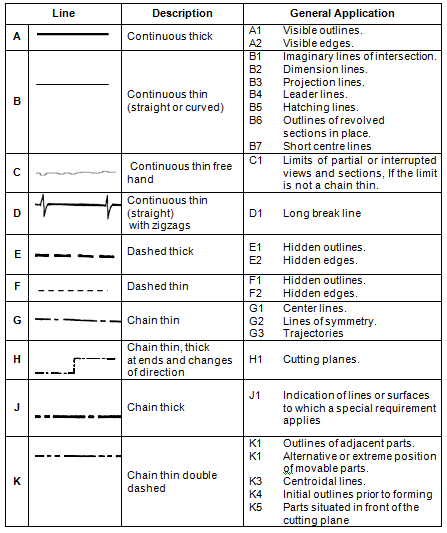
Type Of Lines In Technical Drawings
Technical Drawing Standards Line Types

10 Different Types Of Lines Used In Engineering Drawing
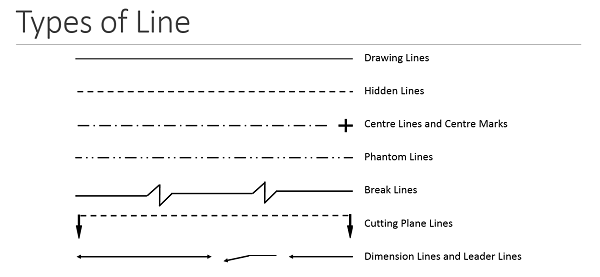
How To Read Engineering Drawings A Simple Guide Make Uk

Standard Engineering Drawing Line Types Line Art Lesson Types Of Lines Different Types Of Lines
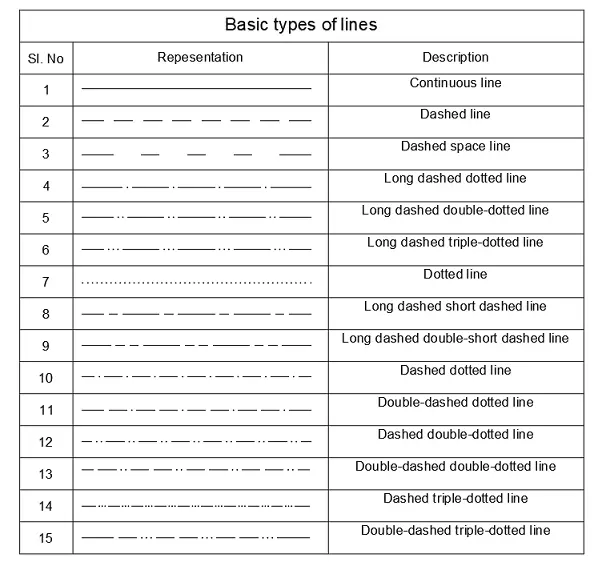
Types Of Line In Engineering No 1 Detailed Guide To Line Types
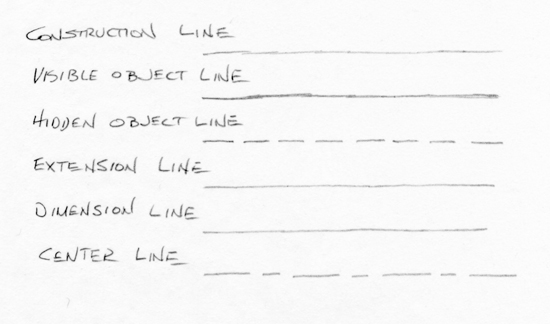

0 comments
Post a Comment